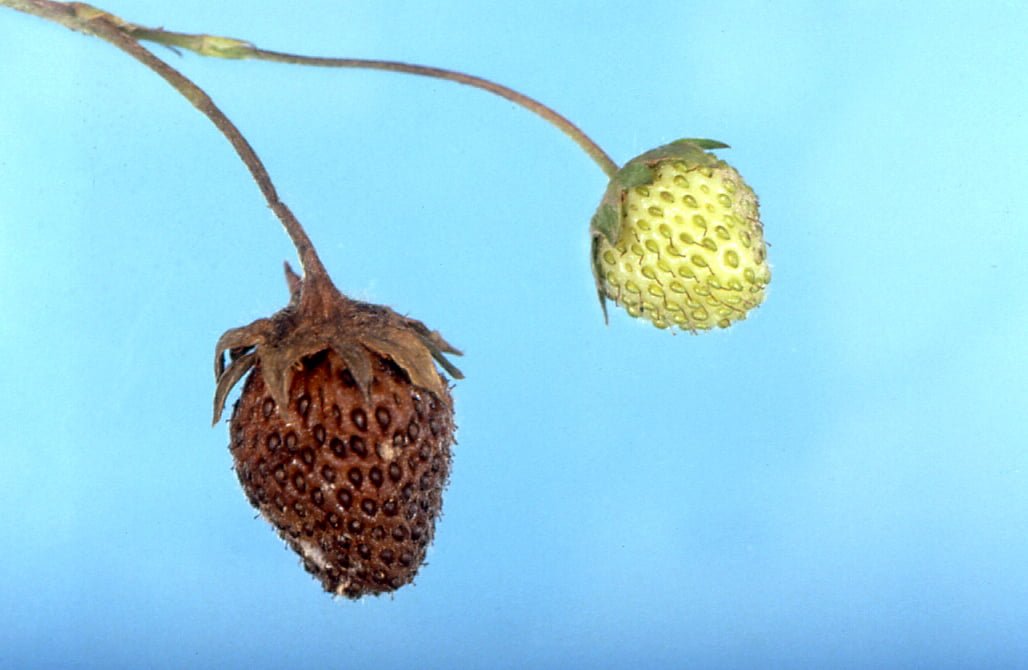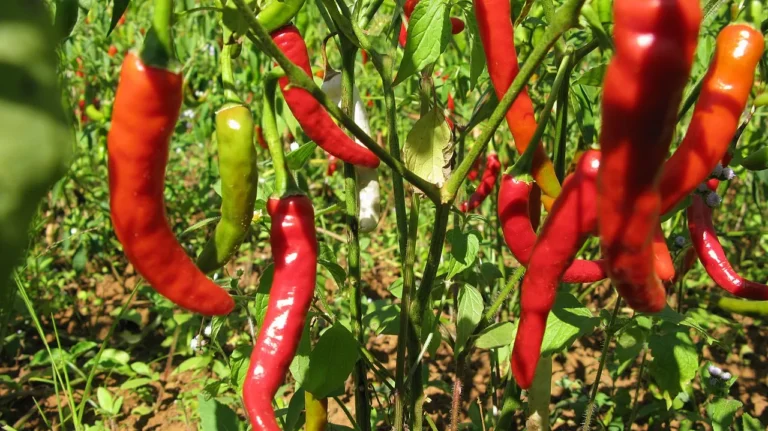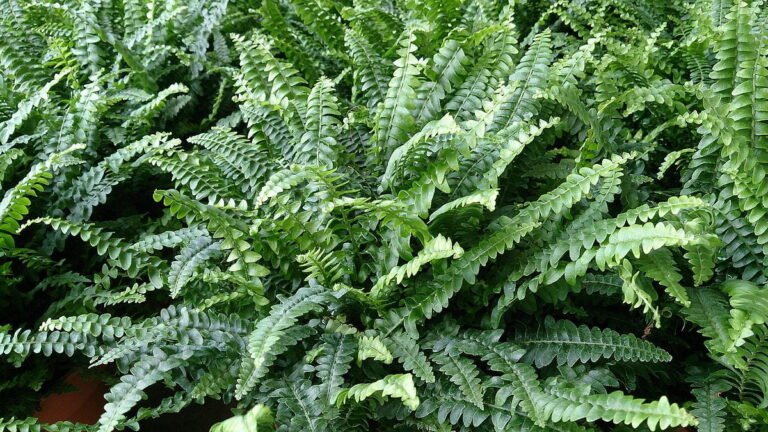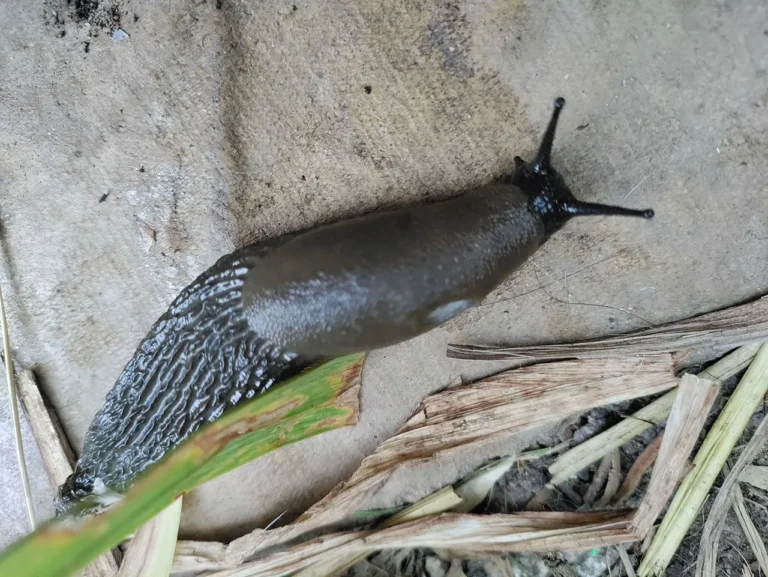Fruity Foe: Understanding and Managing Leather Rot
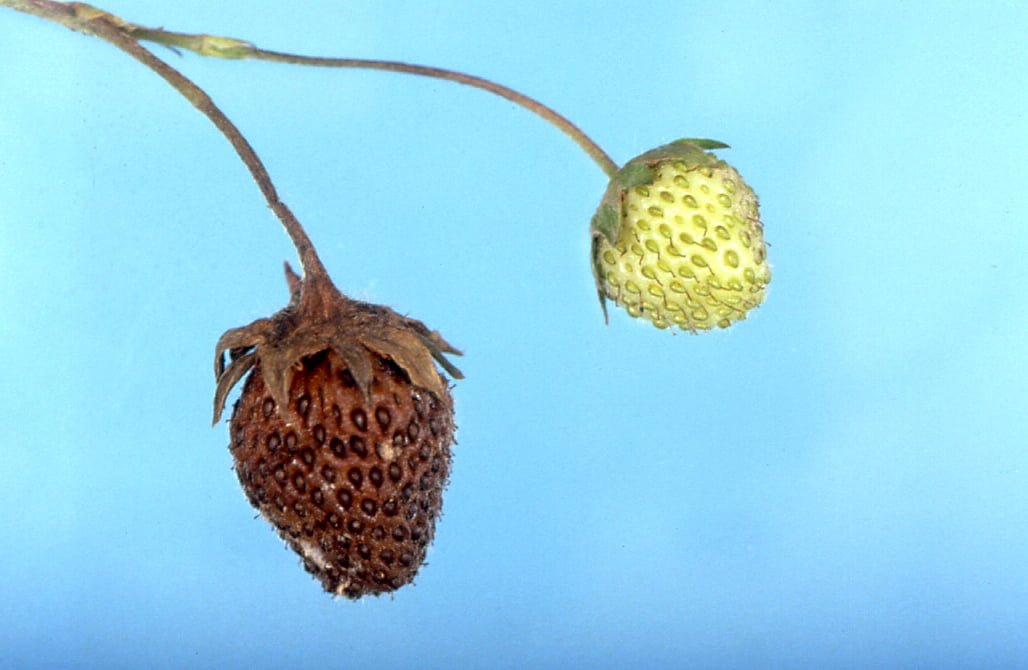
Leather rot, caused by the fungus Phytophthora cactorum, is a common disease that can affect a variety of fruit-bearing plants, including strawberries, currants, gooseberries, and raspberries. The disease can cause significant crop losses if left untreated. In this article, we’ll explore what leather rot is, how to identify it, and the strategies you can use to manage it.
Understanding Leather Rot
Leather rot is a soil-borne disease that thrives in wet, poorly drained soils. The disease is most active in cool, wet conditions and can cause a range of problems, from the rotting of fruit to the wilting and death of the entire plant.
Identifying Leather Rot
The most noticeable sign of leather rot is a change in the fruit’s colour and texture. Infected fruits often turn a brown or purplish colour and become tough and leathery, hence the name “leather rot”. The fruit may also have an off or unpleasant smell. In severe infections, the disease can also cause crown rot, resulting in the wilting and death of the entire plant.
Preventing Leather Rot
Prevention is always the best strategy when it comes to managing leather rot. Here are some preventative measures you can take:
- Good Drainage: Ensure your plants are grown in well-drained soils. You might consider using raised beds if your garden has heavy clay soil.
- Proper Spacing: Plant your fruit plants with adequate space between them to improve air circulation and reduce humidity levels.
- Mulching: Applying a layer of mulch (such as straw or wood chips) can prevent the splashing of rain or irrigation water, which can spread the pathogen.
- Resistant Varieties: If possible, choose plant varieties that are resistant to Phytophthora diseases.
Managing Leather Rot
If you notice signs of leather rot in your garden, take action quickly:
- Remove Infected Fruits: At the first sign of infection, remove and dispose of affected fruits to prevent the spread of the disease.
- Fungicides: There are various fungicides available that can help manage leather rot. Always read and follow label directions when using these products.
- Improve Soil Conditions: If you have ongoing problems with leather rot, consider improving the soil conditions with organic matter to enhance soil structure and drainage.
Leather rot can be a daunting challenge for fruit growers, but with the right knowledge and practices, it can be effectively managed. By maintaining good garden hygiene, selecting resistant varieties, and promptly addressing signs of infection, you can protect your garden from this problematic disease. Remember, a healthy garden is the result of careful planning, good practices, and constant vigilance. Happy gardening!

